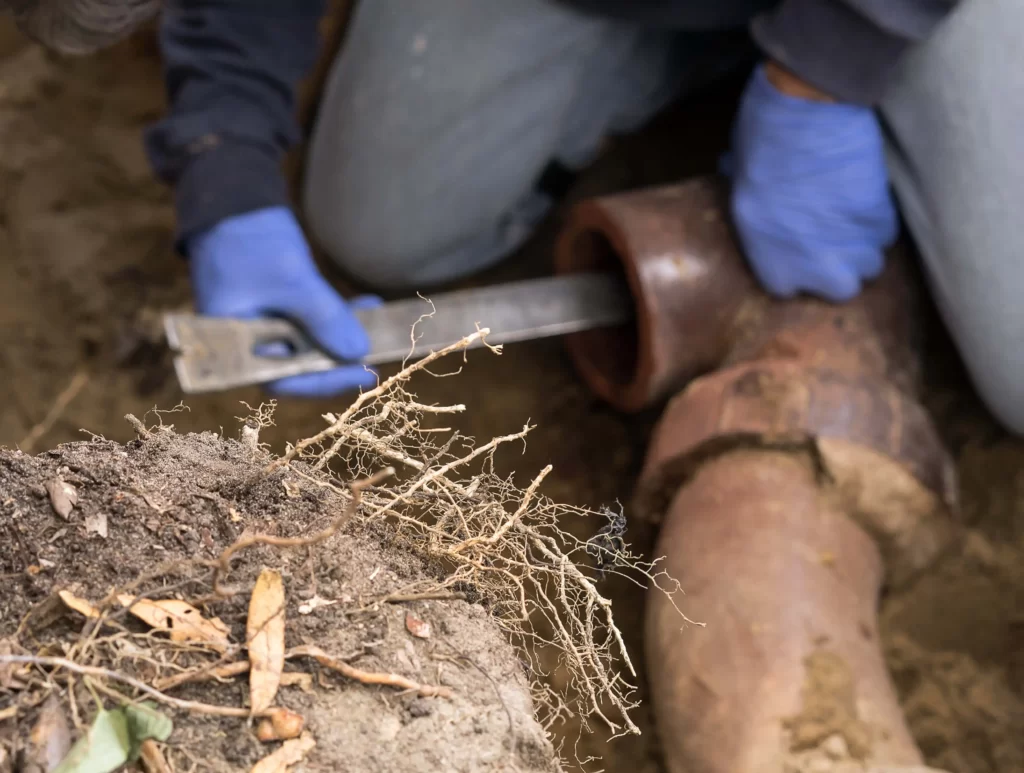Clogged sewer pipes can be a serious problem. The pipes can get clogged due to grease, or tree roots may damage them. To unclog your sewer lines, you need to use the right chemicals and tools. You should also know how to troubleshoot them properly.
The most common method to clear your sewer line is to use hot water, dish soap, and baking soda, but this may not be effective in all cases. It’s essential to identify the location of the blockage first or seek help from a professional before deciding on what solution you will apply.
If you want to try clearing it yourself, this post details some DIY plumbing options that you can try.
Signs You Have A Clogged Sewer Line
If you can smell the foul odor of waste in your home, this is a sign that you have a clogged sewer line. When a sewer line gets clogged, it’ll be unable to drain water effectively. This causes the water to back up and create pooling around the affected area. If left untreated, this can result in flooding and additional problems such as mold growth on walls or floor damage due to water seeping through cracks in the foundation.
How To Dissolve Grease In Sewer Line
If you have a sewer line clog that’s difficult to clear, your first instinct would be to get it done yourself. You can use several proven ways or come up with yours. Among the ways that homeowners have tried include:
- Use A Drain Snake
If your drain is clogged and you’re unsure where to start, use a drain snake to remove the grease. This tool is specially designed to fit into your sink or tub and break up any blockages that may be present. Your best bet is to use a drain snake that has a rotating head and a flexible cable—that’ll help you navigate around bends in your pipes as you work.
If you have any questions about what kind of snake would work best for your particular situation, consult with an expert before proceeding with this step. They can recommend what size and length of cable they think would be most effective in clearing any obstructions from your line.
- Use Baking Soda Or Vinegar
There are a few things you can do to help dissolve the grease in your sewer line. You should try using baking soda or vinegar. If you have access to one, use a broken-up eggshell and pour it into the drain. Then pour some baking soda down after it. Allow everything to sit overnight with a plug, so no other materials get sucked into the drain. It’s also possible that this will work on its own.
Also Read How Much Do Local Plumbing Services Cost?
- Use The Right Chemicals
Using the right chemicals is key to successfully dissolving grease in your sewer line. A diluted solution of caustic soda, purchased at a local hardware store or online, is often used to treat grease buildup in plumbing systems. When using this chemical, you must dilute it properly with water before applying it to your system. You’ll also need gloves, goggles, and face protection while working with caustic soda because it can irritate skin and eyes if not appropriately handled.
You should use an equal amount of water and caustic soda when mixing up your solution. However, depending on how much grease is clogging up your sewer line (and therefore how much solution is needed), this ratio may also change slightly.

- Use Household Plunger
Plungers are an easy and effective way to clear clogs. Place the plunger in the drain, and push it down to create an airtight seal. Then pull up on the plunger with as much force as you can muster—this creates negative pressure that will pull water into your line and dislodge grease buildup. Repeat until you feel resistance from a clogged pipe or fixture, then repeat this process until any remaining debris is removed.
- Combine Powder Detergent With Boiling Water
To dissolve the grease and clean your line, you’ll need to combine 1 cup of powder detergent with 1 gallon of hot water. You can use any brand that you prefer.
Once you’ve finished mixing the detergent and hot water in a bucket, pour it down your sink drain using a funnel. Make sure that there isn’t any water left in your pipes before adding this mixture.
Letting the mixture sit for 30 minutes before flushing it with hot water will help loosen up any remaining clogs so they can be washed away easily down further into the sewer line once everything drains out properly again.
Conclusion
If these tips don’t solve your clogged sewer line, don’t hesitate to call a plumber that offers plumbing services near you. They have special machines with high-pressure water jets to flush out grease deposits and other debris. The process is called hydro jetting which can help prevent blockages from happening again.

